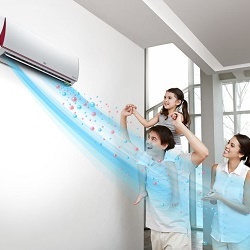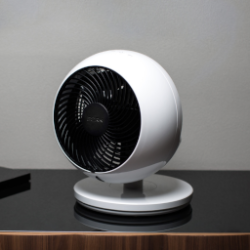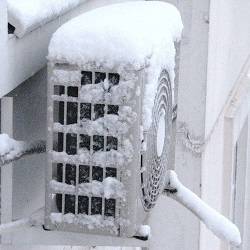What are the fans and their characteristics
A mechanical device designed for direct supply or air inward or out of the room, as well as for moving it through special air ducts is called a fan. Electric motors serve as the drive, and the air flow moves the blades having different configurations and dimensions. Types of fans determine the engine power, overall design and dimensions of the device.
Content
Device classification
According to the type of circulation of the air flow, there are 2 types of ventilation systems. Natural - it occurs in all rooms that are not equipped with fans, naturally, by means of ventilation.

Forced is divided into forced ventilation, which supplies fresh air from the street, and exhaust, when the fans pump all unpleasant odors and exhaust air out. It is in the forced systems that the fans are used.
By design
By design nuances and the principle of operation, there are the following types of fans:
- axial or axial;
- diagonal option;
- centrifugal view;
- diametral;
- direct-flow (without blades).
Some fans are divided in the direction of rotation: the blades can rotate in the right direction or diametrically opposite.
Fans are used in modern ventilation systems. industrial facilities: workshops or buildings where painting is carried out under pressure, conditioned systems. Industrial closed systems use them for the active transfer of various gases or a high-quality combustion process, as pressurization.
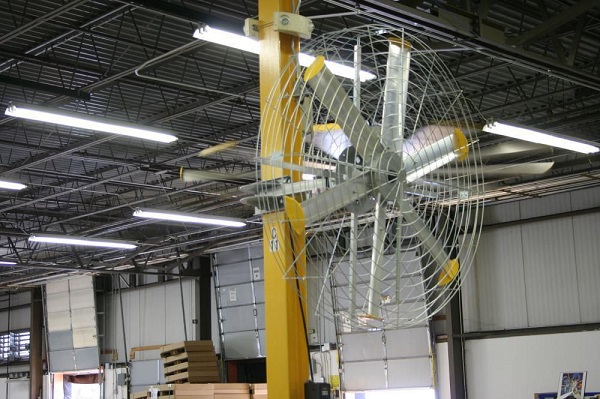
Wall axial fan
Under terms of use
There is a classification of fans, which depends on the environment or the conditions of their use:
- conventional devices designed to move air or gases,whose temperature is not higher than 80 degrees;
- corrosion resistant type is used in environments with high humidity;
- fans heat resistant typedesigned for use well above 80 aboutWITH;
- explosion proof structures used in environments where there is a risk of explosion;
- dust devices apply where the presence of impurities is above 100 mg per cubic meter.
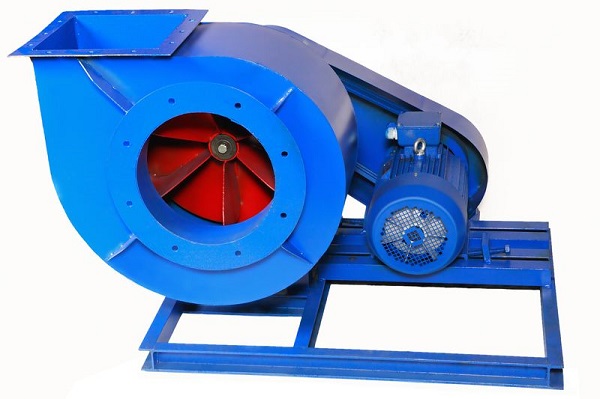
Dust fan
By way of connecting the drive
Types of industrial fans have gradation according to the ways of connecting the drive:
- direct connection of the fan to the electric motor;
- elastic coupling is used;
- V-belt transmission;
- stepless transmission adjustable rotation.
By type of installation
By the method of installation of the product are divided into:
- ordinary - installation is made on a special type of support (steel frame, reinforced concrete foundation or similar structures);
- channel version - mounted only inside the duct;
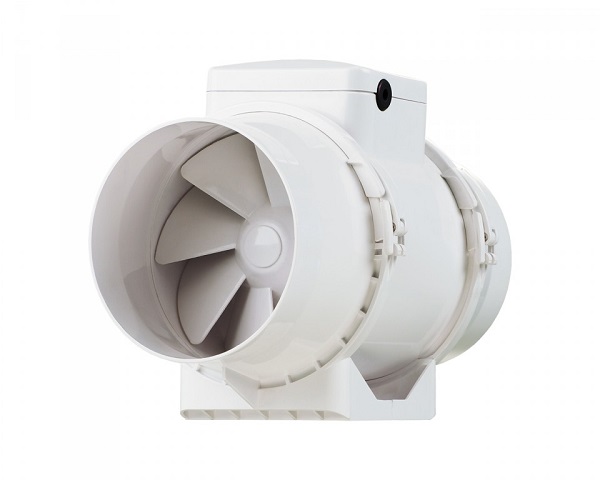
- roof - installation, as a rule, is made on flat roofs of modern buildings.
For technical specifications
In addition to the above, there is a classification based on the technical characteristics of the products:
- flow rate measured in cubic meters m / h;
- pressure, Pa;
- rotation speed, rpm;
- device power, kW;
- efficiency, taking into account the loss of friction parts, the volume of air flow, the configuration of the ducts;
- sound level on others, dB.
The last option is measured during suctionwhen the flow enters the room and when it leaves the duct network to the outside.
Details about the species
We have already explained what kind of fans there are, now let's look at each type of this device in detail.
Axial or axial
The working blades of such devices rotate around one axis and move the air flow through the device. The design is lightweight, so it is extremely popular and is often used in household appliances: for example, coolers in the PC system unit, hair dryers. Their efficiency is high, because axial devices have a rather low resistance to air flow, and there is almost no loss due to friction. Structurally, they look like a wheel consisting of a console type of blades,rigidly fixed at a certain angle relative to the air flow, which always has a direction parallel to the axis of rotation of the device. At the entrance set special collectorwhich aligns or straightens the flow - this is important for improving the aerodynamics of the product.

The presented view, due to the peculiarity of the design, has a rather low power consumption, but only under the condition of complete absence of oncoming air movements.
Axial design extremely simple: a casing with mounting holes for a strong attachment at the place of operation, an electric motor is mounted inside the device, and the impeller is tightly seated on the shaft of the electric drive. The flow head, as well as its flow rate, is governed by the distance between the blades.
Radial
These are such devices when the impeller is located in a special casing of the spiral type. During rotation, the air flow is captured by channels that are located between the blades, and moves to the peripheral part, along the way there is a slight contraction. Centrifugal force at the same time, the air is first thrown into a special casing, and then, through an air duct, it is sent to the injection room.
The main element is a cylinder, at which at the same distance around the circumference the blades are rigidly fixed, bent along the course or against the movement, which depends on the direct purpose of the device. Their main feature - the final stream always has perpendicular angle in relation to the inlet air flow.
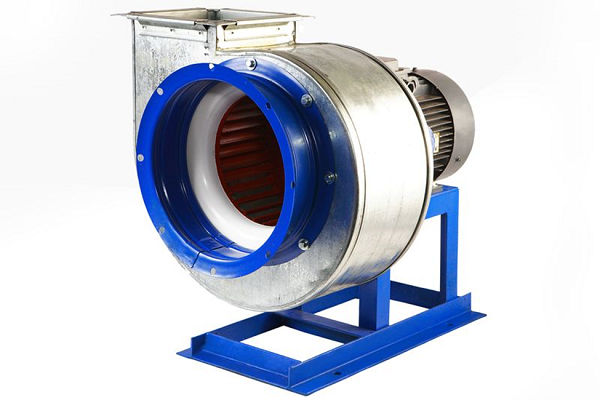
Diagonal
They are only visually different from the axial type: air is drawn in a similar direction, but its output is of a particular direction - diagonal. The original conical shape of the casing contributes to an increase in the rate of air flow, but if we compare them with axial devices of similar size and performance, then sound impact this option will be much lower.
The design combines elements of the radial and axial type of devices, thereby achieving the original compactness and efficiency up to 80%.
Diametrically section
Products of this type consist of a body having custom exit and entry design: a diffuser and a nozzle, respectively, and a cylinder that more resembles a drum with parallel working elements that are slightly bent in the direction of rotation.The whole trick of the functional feature is the double and cross-flow of air through the impeller.
Tangential fans are distinguished by rather high aerodynamic parameters and are capable of creating a so-called flat flow configuration of a very wide size.
Their installation is quite convenient, while you can turn the flow in any direction.
Distinctive features: compactness of installation and high efficiency, in comparison with other fans. Are used in markups - Apparatuses for cooling or heating of premises, thermal curtains in winter at the entrance to shopping centers, supermarkets and boutiques.

Direct flow
Air flows in the fan of a very unusual design forms special turbinelocated in the powerful base of the product - it delivers a highly compressed flow through rather narrow directional slots in the frame. He carries along the adjacent layers of air masses according to the laws of aerodynamics.
From the back of such a fan is created discharge zonewhere air masses are sucked. The result of such an impact is quite impressive: almost 20 more air is pumped through a frame of a different configuration than the built-in turbine creates.
The direction of flow can be successfully adjusted by turning the frame in different directions. The shape of the frame can be given any of the ideal circle to a strongly elongated ellipse, with rather strongly flattened lateral sides.
The advantage of such a system in the absence of rotating parts outside, which ensures one hundred percent safety of use, and the disadvantage is very strong noise exposure on others in operation, because the air accelerates to 90 km / h.

We have listed the main types of fans that can be used for ventilation of industrial facilities, government agencies, restaurants and canteens, multi-storey buildings of sleeping areas, which are mounted in inconspicuous places on the back side or on top of flat roof ceilings. There are special devices huge powerwhich are able to provide reliable ventilation of objects at the same time through several ducts, but this is a completely different topic.

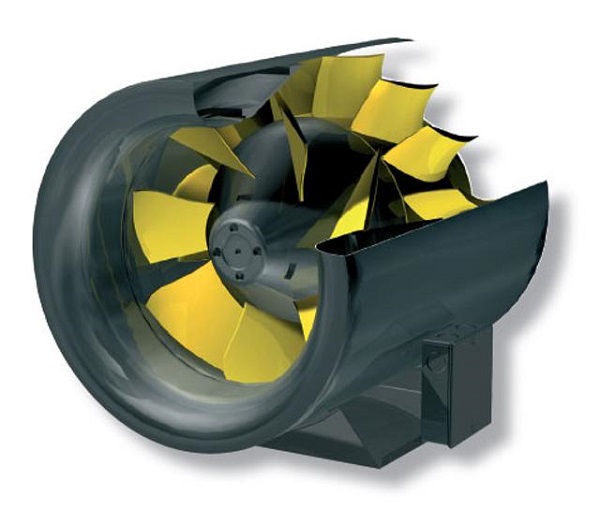
/rating_off.png)






